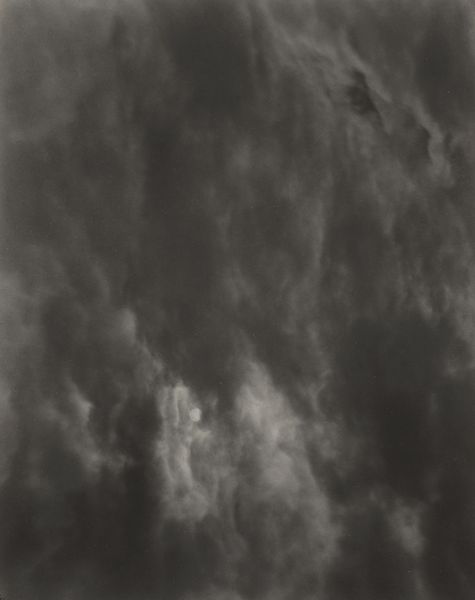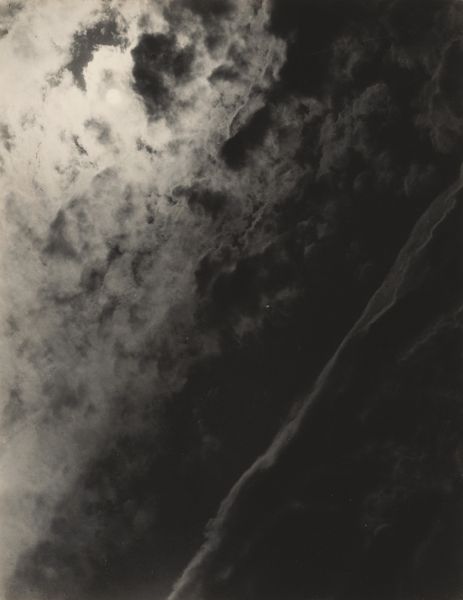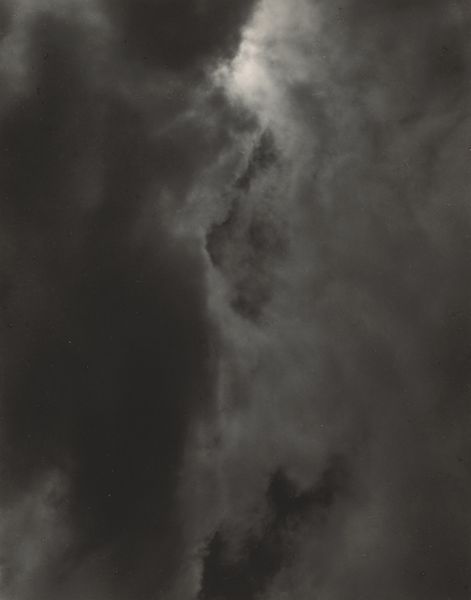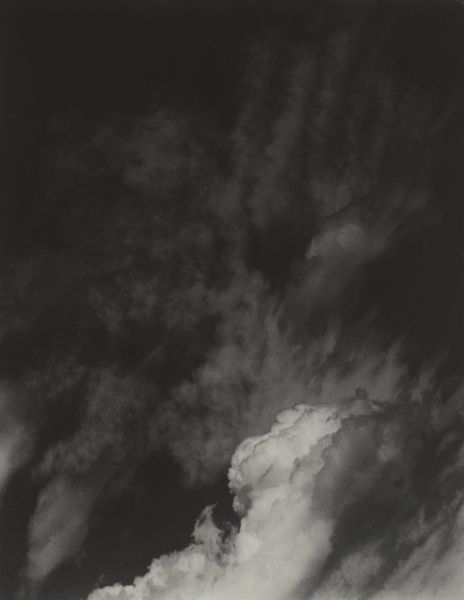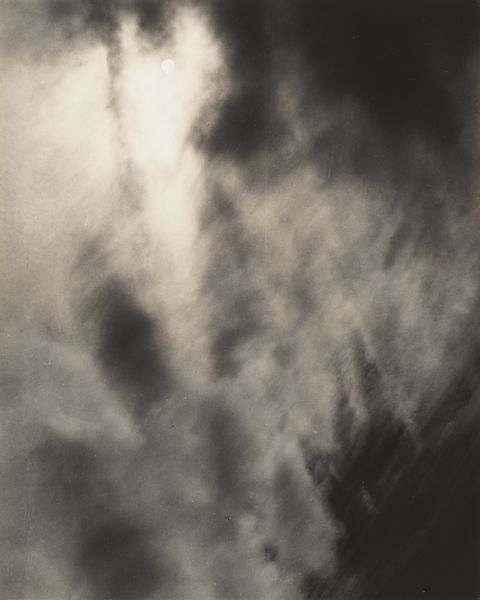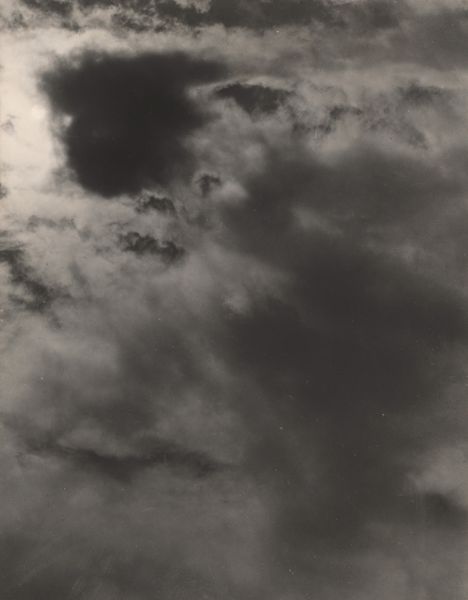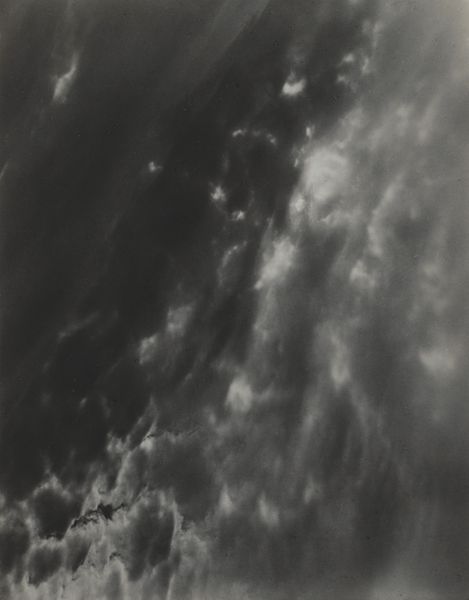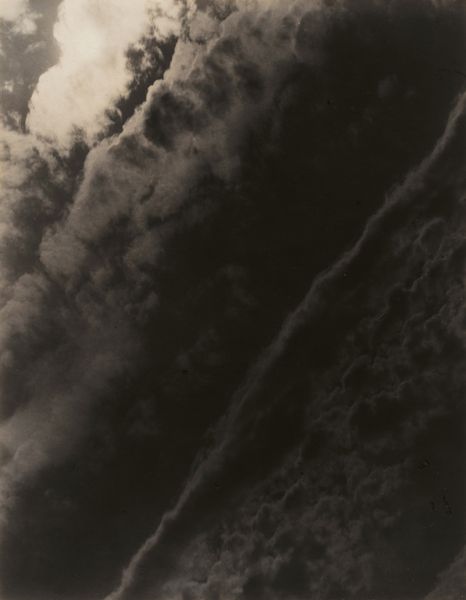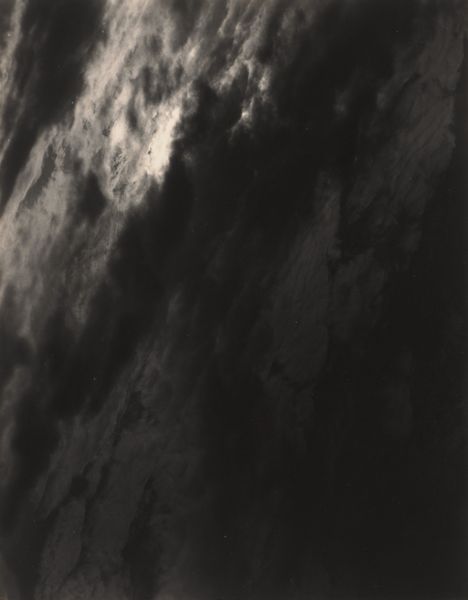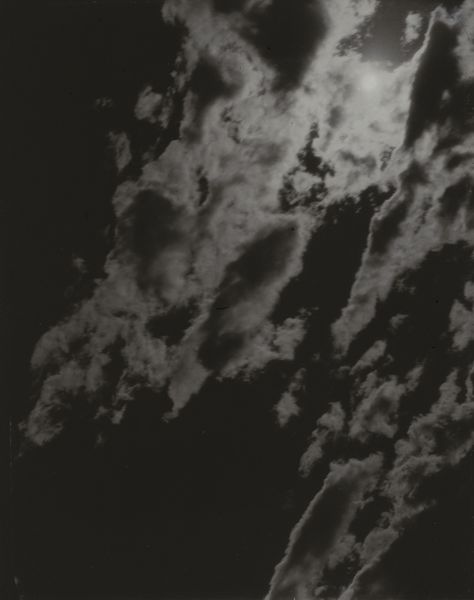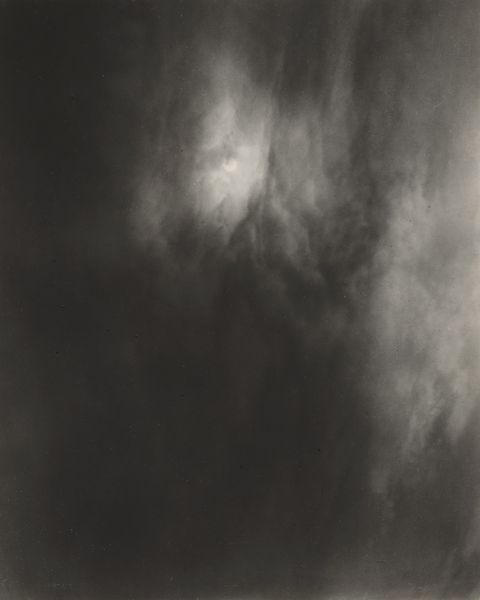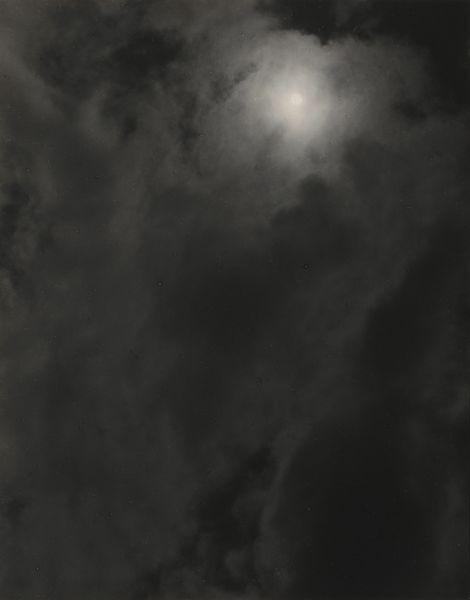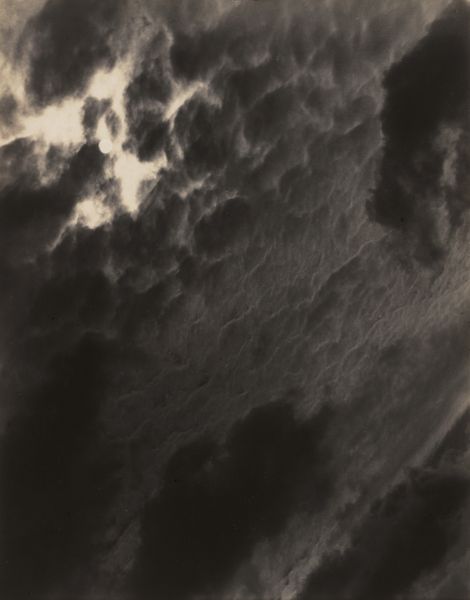
photography, gelatin-silver-print
#
black and white photography
#
pictorialism
#
landscape
#
photography
#
gelatin-silver-print
#
monochrome photography
#
abstraction
#
monochrome
#
modernism
#
monochrome
Dimensions: sheet (trimmed to image): 11.8 x 9.2 cm (4 5/8 x 3 5/8 in.)
Copyright: National Gallery of Art: CC0 1.0
Editor: Here we have Alfred Stieglitz's "Equivalent," taken sometime between 1925 and 1927. It's a gelatin silver print featuring what appears to be clouds and sky. There is something very melancholic, perhaps even spiritual, in its swirling shapes and stark contrast. How do you interpret this work beyond its literal representation? Curator: That sense of melancholy you describe is key. Stieglitz intentionally titled these photographs "Equivalents" to suggest they were metaphors for inner states, a move towards abstraction reflecting the post-war disillusionment. Considering this in light of its historical context, the aftermath of World War I, can we see the clouds as representing something more profound than just weather? Perhaps the turbulent emotional landscape of the era? Editor: That’s a really interesting point! I was just thinking about how the composition feels so unbalanced, with the heavy dark cloud mass dominating the frame. Curator: Exactly. Think about how Stieglitz, through his involvement with the Photo-Secession movement, fought for photography's recognition as fine art. Were these "cloud portraits," as he sometimes called them, a challenge to traditional artistic hierarchies and expectations of subject matter, using clouds to symbolize something not easily captured in straightforward portraiture? Editor: So, in a way, by photographing clouds, Stieglitz was also critiquing societal expectations of what art *should* depict, opening it up to inner emotion and abstraction. Curator: Precisely. By focusing on such ephemeral subjects, he invited viewers to contemplate the transient nature of existence itself, reflecting the shifts in social values and anxieties of the time. What might that signify regarding gender and identity politics as photography evolved as an artistic form? Editor: I see it now. It's not just a picture of clouds, it's a reflection of a changing world, challenging what we consider worthy of artistic representation. Thanks, that really opened my eyes! Curator: And mine as well! Thinking about art in terms of its historical context helps reveal such richer, nuanced meanings.
Comments
No comments
Be the first to comment and join the conversation on the ultimate creative platform.
